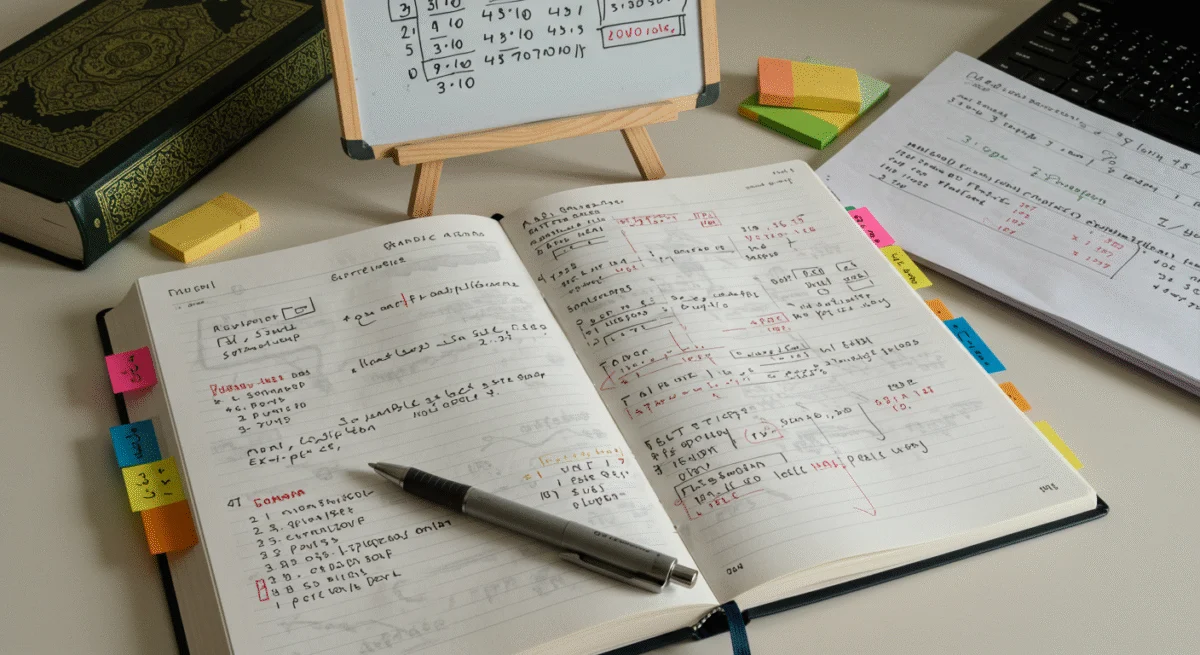
Arabic grammar — known as nahw (syntax) and sarf (morphology) — has a reputation for being complex and intimidating. But here’s the truth: you don’t need to master every rule to begin understanding and using the language effectively.
With the right mindset and a step-by-step approach, grammar becomes not a burden, but a tool — one that helps unlock the deeper meaning of the Quran and Islamic texts.
🧭 1. Focus on What Actually Matters First
Instead of drowning in technical terms, start by learning the most useful grammar concepts for beginners:
- Ism (noun), Fi‘l (verb), Harf (particle)
- Present vs. past tense verbs
- Definite vs. indefinite nouns (ال vs. tanween)
- Basic sentence structure: Subject – Verb – Object
🧠 Tip: Focus on what appears frequently in the Quran — you’ll see patterns repeat often.
🧩 2. Learn Through Patterns, Not Just Rules
Arabic is a root-based language. Most words are derived from three-letter roots, and by learning how these roots form patterns, you can understand and recognize vocabulary quickly.
For example, the root k–t–b (كتب) leads to:
- Kitāb (book)
- Maktab (office)
- Kātib (writer)
- Maktūb (written)
Understanding these patterns (called wazn) helps you guess meanings, even without a dictionary.
📘 3. Use Quranic Examples — Not Dry Exercises
Most grammar books start with random sentences that have little meaning. But you can make grammar engaging by using real verses from the Quran or short Hadiths.
Example:
الحمد لله رب العالمين
Learn how “Al-” makes a noun definite, how “Lillah” is a possessive construction, and how the phrase is a complete sentence.
This method makes grammar feel spiritually connected, not just academic.
🎯 4. Keep a Mini Grammar Notebook
Create a small reference journal where you write:
- New grammar rules
- Quranic verses that show the rule in action
- Common verb forms and how they change
- Your own simple sentence examples
This becomes your personal toolkit for quick review.
💡 5. Use Visual and Interactive Resources
Arabic grammar is easier to grasp when seen in color-coded charts, tables, and examples. Try:
- Madina Arabic Books (with videos on YouTube)
- Understand Quran Academy
- Arabic Grammar in 10 Minutes a Day (PDF guides)
- Apps like “Learn Arabic Grammar” or “Nahw Mir”
📊 Visual learning makes abstract grammar rules stick better and faster.
🧑🏫 6. Consider a Grammar-Focused Quran Course
Some online programs specialize in Quranic Arabic with a grammar-first approach, explaining verses while teaching how the sentence is built. This dual method makes learning practical and meaningful.
At Rawdat Al-Quran Academy, our Arabic grammar classes are designed to build real comprehension, not just memorization — especially for non-native speakers focused on Quran.
🌟 Conclusion
Arabic grammar doesn’t have to be a maze. With small, consistent steps and the right focus, you’ll start to see how Arabic sentences are beautifully structured — and how grammar leads to clarity and connection with the Quran.
You don’t need to become a scholar — you just need the tools to understand what you’re reading and say what you mean with confidence.
Arabic grammar is not about perfection — it’s about unlocking deeper meaning, one verse at a time.